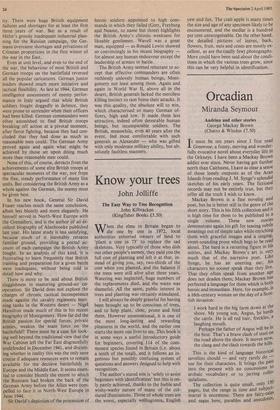Know your trees
John Jolliffe
The Easy Way to Tree Recognition John Kilbracken (Kingfisher Books £3.50)
when the elms in Britain began to die one by one in 1972, local authorities exhorted owners of land to 'plant a tree in 73' to replace the sad skeletons. Very typically of those who dish out other people's money, they paid you the full cost of planting and left it at that, in- stead of giving you, say, two-thirds of the cost when you planted, and the balance if the trees were still alive after three years. Watering was neglected, huge numbers of the replacements died, and the waste was shameful. All the same, public interest in trees and planting was certainly stimulated.
I will always be deeply grateful for having been brought up to be conscious of trees, and to help plant, clear, prune and feed them. However unsensational, it is one Of the most long-lasting and rewarding pleasures in the world, and the earlier one starts the more one lives to see. This book is in some ways a useful introductory guide for beginners, covering 114 of the com- monest species found in Britain (i.e. about a tenth of the total), and it follows an in- genious but possibly confusing system of questions and answers designed to help with recognition.
The author's stated aim is 'solely to assist beginners with identification' but this is on- ly partly achieved, thanks to the feeble and wishy-washy nature of many of the col- oured illustrations. Those of whole trees are the worst, especially wellingtonia, English yew and ilex. The crab apple is many times the size and age of any specimen likely to be encountered, and the medlar is a hundred per cent unrecognisable. On the other hand, the detailed pictures of leaves, bark, flowers, fruit, nuts and cones are mostly ex- cellent, as are the (sadly few) photographs. More could have been said about the condi- tions in which the various trees grow, since this can be very helpful in identification.






































 Previous page
Previous page